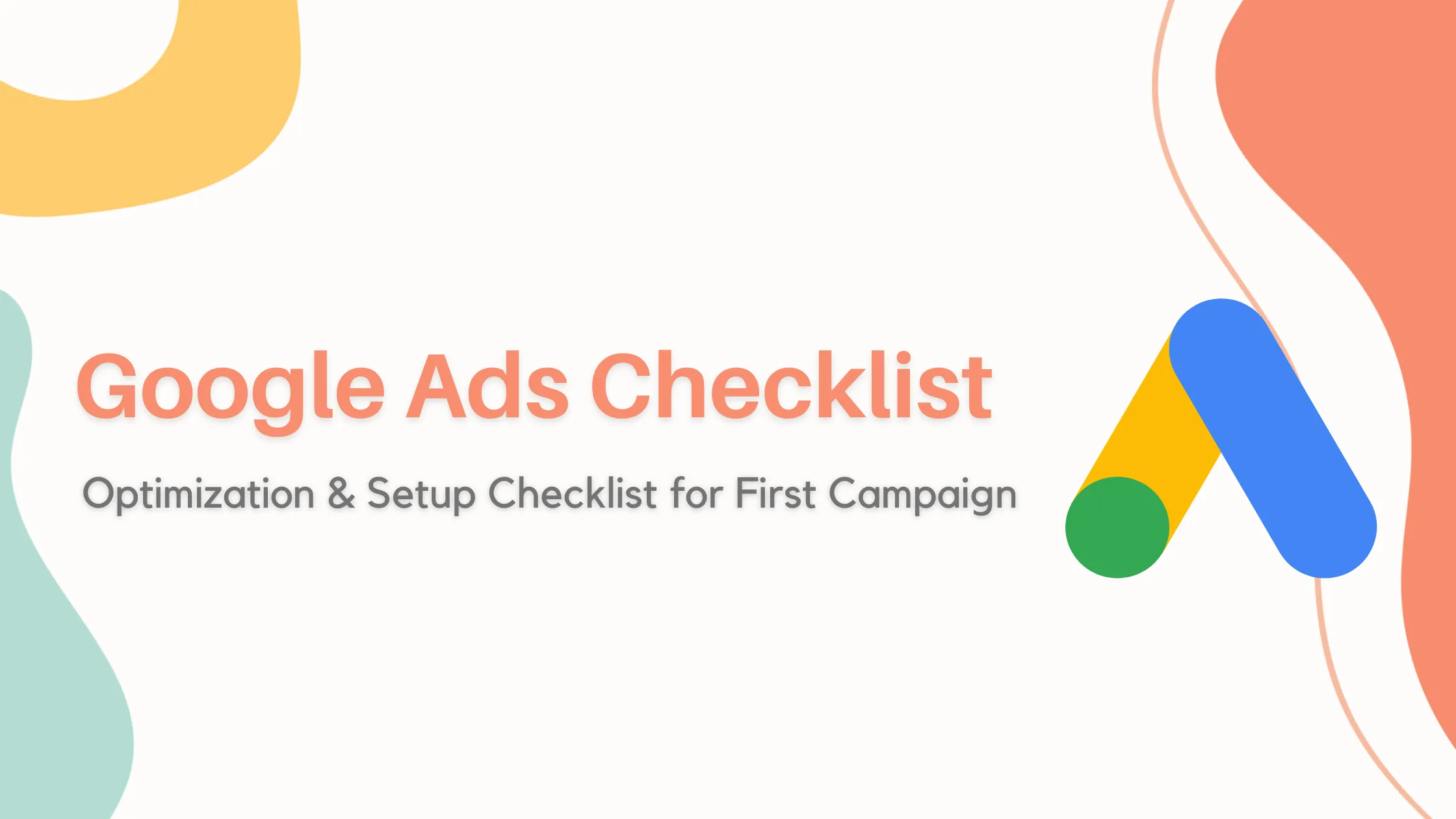Nowadays, Google Ads is becoming much more competitive with each passing day. As a result, the cost of Google Ads has increased significantly over the years, a trend expected to continue. Apart from that, Google Ads is one of the few successful modern advertising methods. And it’s still the best even today because it makes your campaign profitable.
However, you should put up your campaigns correctly to achieve the best from Google Ads. With Google Ads being a powerful tool, it’s best to ensure you use it to channel quality visitors to your website and convert them.
Therefore, if you’re looking forward to launching a Google Ads Campaign, it would help to consider using a Google Ads Checklist. This article will discuss what to have on your checklist. According to Google Ads Management Company , these items are essential and can help you optimise your Google Ads campaign in 2022.
What Are Google Ads?
Two years ago, Google Ads was launched, and today, it’s the most famous and substantial pay-per-click (PPC) advertising platform. Google Ads is a version of the Google AdWords advertising platform that has undergone a rebranding. Meanwhile, Google AdWords was launched in October 2000.
Checklist for Launching a Google Ads Campaign
Below is an overview item checklist for launching a Google Ads campaign:
1. Create Your Keyword List
When launching a Google Ads Campaign, it’s best to develop effective keywords that people may use when searching for your online presence. Additionally, you should ensure your keywords remain relevant, especially to the ad. For potential customers to visit your landing page after clicking on your ad, it’s better to use keywords that trigger and lead them to it.
On the other hand, if you’re concerned about creating your keyword list, Google Ads got you covered. Did you know that Google Ads features a keyword planner tool , which you can use freely?
This keyword planner can assist you in coming up with a keyword sample list suitable for your campaigns or you can use some other best keyword research tools. However, you must ensure you review the keyword list sample and only use that effectively.
Meanwhile, the keyword planner will estimate the amount you’ll likely bid on a specific keyword to enable your ad to show in search results. With such estimates, you’ll be able to tell if some of the keywords on your list are pricier to bid on.
This way, you can eliminate keywords that don’t suit your budget and remain with a few that fit within your budget. However, if your keyword is competitive, you can pay more to bid on it. Nevertheless, when starting a Google Ads Campaign, avoid highly competitive keywords. You might end up using your entire budget on fewer clicks.
Also, it’s best to opt for medium- to low-cost keywords as they give you sufficient exposure. These keywords can come to your aid, especially when testing if your campaigns are functional.
2. Set Up The Location
If you’re looking forward to launching a Google Ads campaign, it’s a good decision to target the appropriate locations. It would help if you considered whether your business serves international or local customers.
If it’s a local business, your ads should target your area. However, if your business serves international clients, commence with a single campaign targeting one country. With this strategy, you can tailor your ads to each country and track their success independently.
3. Set Goals And Budget
Before launching your Google Ads campaign, you should determine your budget, goals, and how long you’re likely to run your campaign. Furthermore, the campaign goal is the highest cost you’re willing to pay for every conversion. It can be the lead, sale, or even anything you prioritize on your site.
On the other hand, having more than one goal for a single campaign might be challenging to optimise since they might clash easily. However, if achieving multiple goals is part of your plan, you need an additional campaign in the same Google Ads account. As you implement, ensure you focus on the new goal.
4. Learn Google Ads Basics
Ensure you learn the basics to have effective Google Ads management . Starting without understanding terms such as ‘budget,’ ‘bids,’ ‘keywords,’ ‘ad groups,’ and ‘campaigns’ might make the process more challenging.
Before setting up your ads and campaigns, it would be better to know the various types of ads and when to implement them. In addition, you also need to understand how campaign structure works and how you should build a successful one.
Meanwhile, if you’re not familiar with PPC and feel like you require basic courses to get started, make good use of Google Skillshop, which incorporates helpful resources. Learning Google Ads basics can make the entire process of writing ads and planning campaigns easy.
5. Organize Your Account
Organizing your account for success needs you to commence by categorizing your services and products. Moreover, ensure that your account structure is based on those categories. Similarly, the Google Ads account has two organization levels, primarily the ad groups and campaigns.
In most cases, campaigns usually represent larger categories in a business setup, while the ad groups represent a particular set of services or products. Bear in mind that creating keyword lists, ads, ad groups, and campaigns separately is critical because it keeps your ads relevant. Besides, you’re likely to meet many people who might be interested in whatever you offer if your ads are more specific and focused.
6. Include Ad Extensions
Ad extensions usually offer you benefits when it comes to the search engine, and they’re free. Thus, ensure you use them to maximise the chances of potential customers clicking on your ad. However, some ad extensions don’t apply to some businesses. Nevertheless, callout extensions and site links extensions are ad extensions that are helpful in each business.
In addition, it would help if you understood how an ad extension could positively affect your campaign’s quality score. This explains why it should be included in your campaigns.
7. Select Keywords Wisely
No ad marketing campaign is a success without the right choice of keywords. This is why it’s essential to build your keyword list because it’s crucial for your campaigns. However, you can’t just use any keyword. Instead, take your time to choose those that can bring the biggest impact.
On the other hand, if you’re confused about using the ideal keywords, it’s best to consider hiring an SEO company to help you. Meanwhile, in your search for the right keywords, you should also be careful not to use the wrong ones. This is because such keywords have the opposite impact by preventing Google from triggering your ad.
Because of this, you should take your time to create a list of negative keywords that you shouldn’t use when launching your Google ad campaign. As a result, you can get the much-needed clicks desired by your prospective clients.
Meanwhile, it’s best to follow several useful steps when building your keyword list. Here are some of them:
- Build A Large Keyword List
Choosing the right keywords to use should start with first listing down as many keywords across the different ad groups. While doing this, make sure the spelling is correct, use the different match types, and use plurals. You can easily do this using a keyword tool found in Google Ads.
- Categorize Keywords Into Ad Groups
Once you build your list of keywords, categorize them into ad groups. The classification of these ad groups varies depending on the product’s relevance and the kind of keyword.
Doing this will help you in the future to better optimise your Google Ads campaign. In addition, you shouldn’t make the mistake of using general and specific keywords in one ad group.
- Use Different Match Types
You need to have perfect control over the ads in your marketing campaign by using exact match keywords and phrases. This means not being overdependent on the broad match keywords.
8. Develop A Campaign Structure
It’s no doubt that keywords and ads are essential for any advertising campaign. But after figuring them out, the next logical step is to create a campaign structure for the ads and keywords. This will help you combine them perfectly in groups and create more suitable ad copies to entice your target audience.
Significantly, the campaign structure you choose should ideally reflect your target objectives. On the other hand, the number of ad campaigns and groups you want can be based on your campaign’s goals.
After doing your campaign structure for the ads and keywords, you can develop more appropriate ad copies for all the ad groups. Doing this will lead to greater control over your chosen keywords, which Google will identify.
Conclusion
As much as Google Ads can be competitive, there are still effective ways you can run a campaign that’s quite profitable. Therefore, you can start improving and setting up campaigns by following the eight-item checklist for launching a Google Ads campaign featured in this article.
Furthermore, Google Ads offers many benefits, such as enhancing your brand exposure, offering complete control over your campaigns, and addressing your potential clients’ interest points.
Loading comments...


